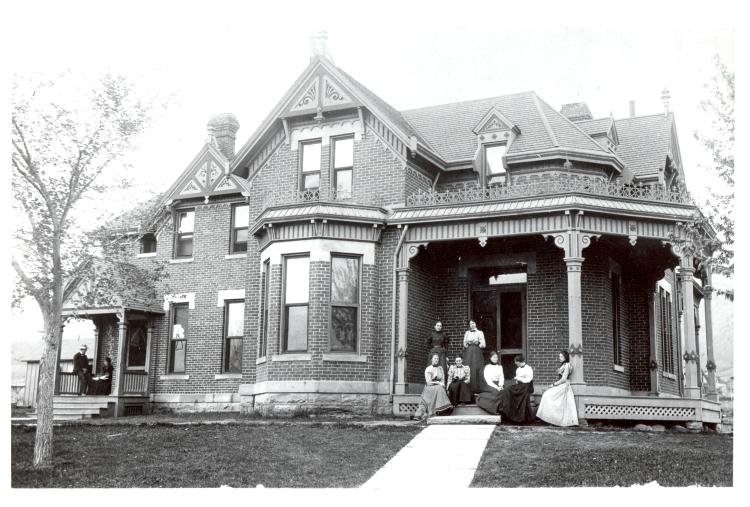The Hazel Gates Woodruff Cottage
Until 1884, the entire University of Colorado (CU) was located in Old Main. That year four new buildings were added to the CU Boulder campus, including Cottage #1 and #2. Cottage #2 housed the men, while “Ladies’ Cottage” (#1) housed the women students and their house mother at the University.
In the late 1920s Cottage #2 was demolished to make room for a student union, but Cottage #1 still remains. This building, with its Victorian detailing, is one of the most historically significant structures on the CU Boulder campus today. It is a symbol of the historical presence of women from its earliest days.

As sororities began to appear on campus around the turn of the twentieth century, and there were housing alternatives for women, the Cottage gradually changed from a dormitory into the women’s center and eventually came to be called the Women’s Building. It was the focus of all women’s activities on campus and the community. The Boulder YWCA was founded there and later the Cottage became the office of the Dean of Women and home to CU’s former Department of Home Economics.
For many years the Cottage was on the demolition list, but in 1993 a private fund-raising effort was launched to complete a $1 million restoration project. A local women-owned architectural firm, Andrews & Andrews, P.C., was chosen to lead the historical renovation. The support of several generous benefactors allowed our program to complete a successful and historical renovation of our building in 1997.
Commander James A Woodruff, Jr., was offered the opportunity to name the building in honor of his wife, Hazel Gates Woodruff, in recognition of his generous contribution to the project. The faculty proposed to recognize several other major donors to the project by naming interior spaces of the cottage in their honor.

